What Happens if You Put a Vape in Carry-On: Air Travel Guidelines Explained
Air travel has its own set of rules and regulations, especially when it comes to the items allowed in carry-on luggage. One such item that raises questions and sparks curiosity among travelers is the electronic cigarette, commonly known as a vape. The popularity of vaping has dramatically grown in recent years, leading to concerns about the safety of storing a vape in one’s carry-on bag while on a flight.
Carrying a vape in a carry-on is indeed permitted, but there are specific rules and guidelines to follow. Airlines usually require vapes to be stored in carry-on luggage to prevent mishandling or issues related to increased pressure and temperature in checked baggage. However, passengers must also be mindful of the restrictions on e-liquid quantity and the safe storage of the device itself to ensure flight safety and compliance with Transportation Security Administration (TSA) regulations.
Understanding the importance of adhering to these rules and packing a vape properly will not only make the traveling experience more convenient but also reduce the risk associated with improper storage and potential hazards on board. Awareness of these regulations ensures a smooth travel experience for both the vaping individual as well as their fellow passengers.
Table of Contents
Current Regulations Related to Airport Carry-On
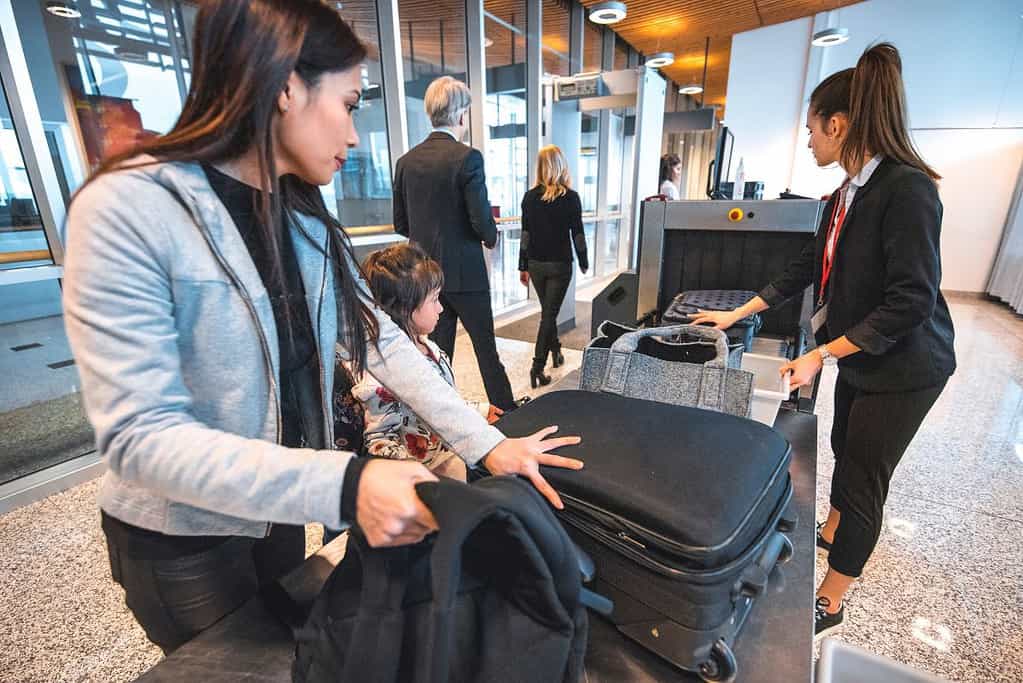
TSA Rules
The Transportation Security Administration (TSA) is responsible for implementing and enforcing security regulations at airports in the United States. One of their primary concerns is ensuring the safety of passengers and their belongings while traveling. As a result, TSA has established specific rules and guidelines regarding the transportation of vapes and other electronic devices in carry-on luggage.
According to the TSA, electronic nicotine delivery systems (ENDS) such as vapes, e-cigarettes, and vaporizers are allowed in carry-on bags. However, they are not permitted in checked luggage. This rule is in place due to the risk of overheating and potential fire hazards posed by the lithium-ion batteries that power these devices.
NEW CUSTOMER DISCOUNT
Save 15%
15% OFF YOUR ENTIRE ORDER FOR NEW CUSTOMERS USE CODE WELCOME15!
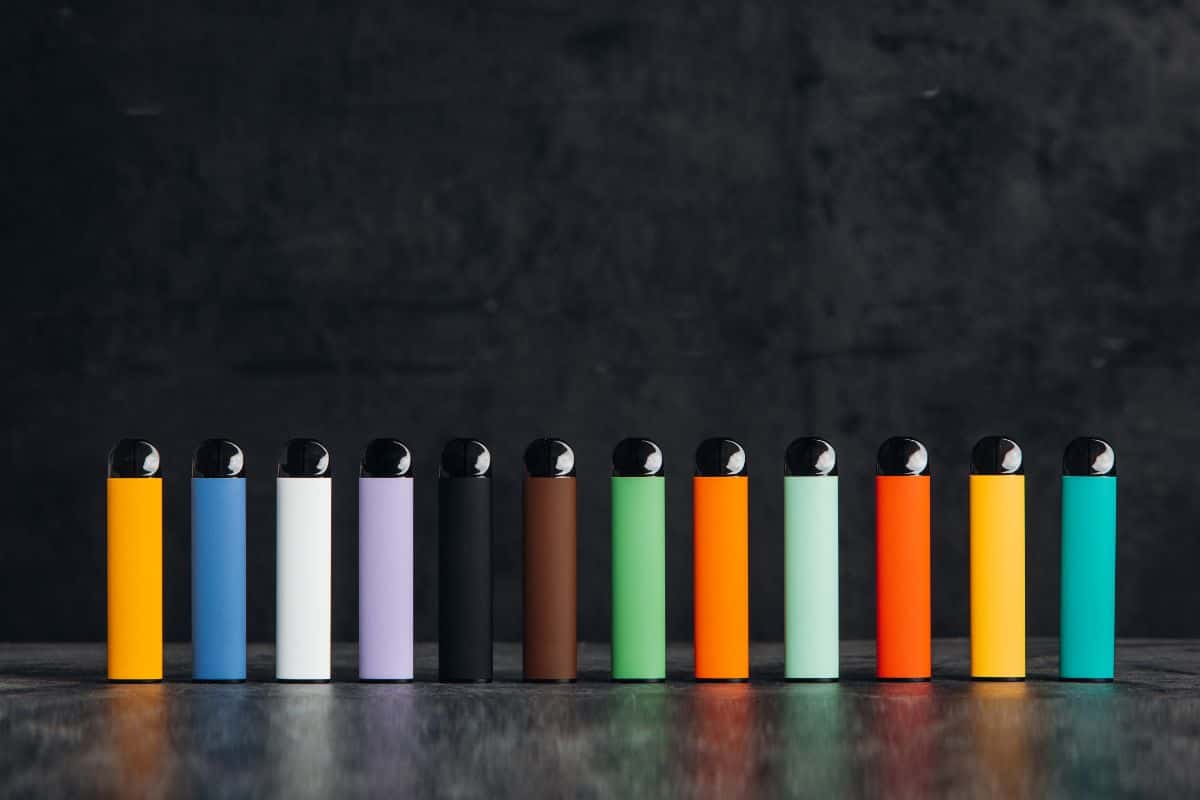
When passing through airport security screening, passengers are required to remove their vapes or e-cigarettes from their carry-on luggage and place them in a separate bin for inspection by a TSA officer. This is similar to the process for laptops and other electronic devices.
In addition to the rules surrounding the transportation of vapes and e-cigarettes, there are also TSA regulations regarding the liquids used in these devices. Travelers are allowed to bring a limited quantity of e-liquid or vape juice in their carry-on bags, as long as they adhere to the TSA’s 3-1-1 liquids rule. This rule states that passengers can carry containers of liquid that hold 3.4 ounces (100 milliliters) or less, stored in a single 1-quart clear plastic zip-top bag, with one bag allowed per traveler.
By following the TSA rules and regulations related to vapes and e-cigarettes, passengers can ensure a smoother security screening process and a safer traveling experience.
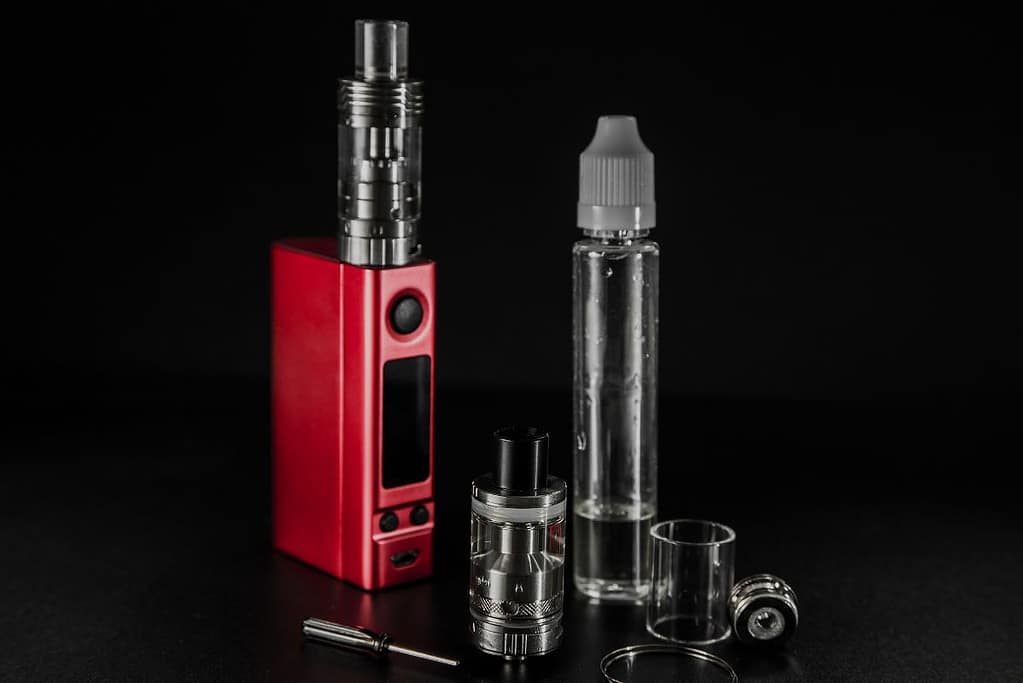
Understanding Vapes and Related Equipment
Vaping devices, also known as electronic cigarettes or simply vapes, have become increasingly popular as an alternative to traditional smoking methods. In this section, we will discuss the components and different types of vapes available in the market. Our aim is to provide a clear, neutral and confident understanding of these devices and their related equipment.
Components of a Vape
A typical vape consists of several components that work together to produce vapor from a flavored liquid known as e-liquid or vape juice. These components include:
- Battery: Most vaping devices are powered by rechargeable lithium batteries. They provide the necessary energy to heat the atomizer and vaporize the e-liquid.
- Atomizer: This is the component responsible for heating the e-liquid and converting it into vapor. Atomizers come in various forms, such as coils, wicks, and ceramic plates, depending on the type of vape.
- Tank or Cartridge: The tank or cartridge holds the e-liquid and feeds it to the atomizer. In some devices, the tank and atomizer are combined into a single unit known as a clearomizer.
- Drip Tip/Mouthpiece: This is the part of the vape through which users inhale the vapor produced by the device.
- Control Buttons and Display: Many vapes have buttons to adjust settings such as temperature, wattage, and airflow, as well as a display screen to show relevant information like battery life and current settings.

Different Types of Vapes
Vaping devices come in various shapes, sizes, and functionalities. Some common types include:
- Vape Pens: These portable devices resemble a traditional pen in shape and size. They typically consist of a battery, atomizer, and a pre-filled or refillable cartridge. Vape pens are popular due to their simplicity of use and affordability.
- Disposable Vapes: As the name suggests, disposable vapes are designed for one-time use and can be discarded once the e-liquid runs out or the battery dies. These devices are often small, lightweight, and inexpensive, making them a popular choice for those new to vaping.
- Mods: Also known as advanced personal vaporizers (APVs) or box mods, these devices come with more advanced features and customizable settings. They usually have larger batteries, higher wattage capabilities, and are compatible with various atomizers and tanks. Mods cater to more experienced vapers looking for a tailored vaping experience.
- Pod Systems: These compact devices use refillable or disposable pods that contain the e-liquid and atomizer. They are easy to use, discreet, and often have a more potent nicotine delivery, making them suitable for those trying to quit smoking.
Understanding vapes and their related equipment is crucial, especially when it comes to traveling with them in your carry-on luggage. Knowing the components and different types of vapes will help ensure that you adhere to regulations regarding lithium batteries and devices containing liquids, preventing potential complications during your journey.
Transporting Vapes and Vape Accessories
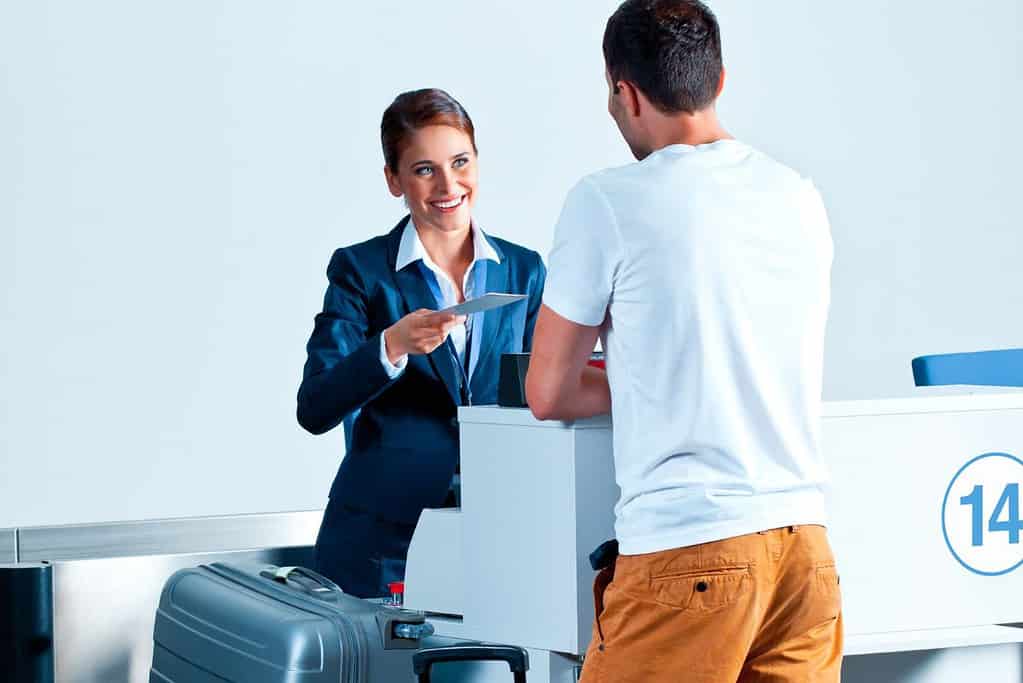
How to Store Your Vape in Carry-On
When traveling with a vape and vape accessories, it’s important to store them properly in your carry-on luggage to comply with regulations and to ensure your devices and e-liquids remain safe during the journey. First, remove the batteries from your vape device and store them in a protective case. This will prevent any accidental activation or damage caused by pressure changes during the flight. Next, ensure all e-liquid containers are in compliance with the 3-1-1 liquids rule, which means they should not exceed 3.4 ounces (100ml) and must be placed in a clear, quart-sized plastic bag.
When packing your vape device and accessories, consider the following:
- Place your vape device and accessories in a separate, padded bag or case to protect them from damage.
- Secure all e-liquid containers tightly to avoid leaks due to pressure changes during flight.
- If you use vape cartridges, keep them in their original packaging or a suitable protective case.
Potential Issues with Vape Transportation
While vapes and vape accessories are generally allowed in carry-on baggage, there are a few potential issues to be aware of when transporting them on a flight. Firstly, ensure you follow the 3-1-1 liquids rule for any e-liquids or vape juices, including those containing nicotine. This rule applies to both carry-on bags and checked luggage, with a greater risk of confiscation or fines if you fail to comply.
Secondly, note that vapes and vape accessories are not permitted in checked baggage due to potential safety hazards. Electronic devices and batteries can be a fire risk in the cargo hold of an aircraft, so it’s crucial to store them in your carry-on luggage.
Lastly, be prepared for the possibility of additional security checks and questions about your vape equipment, especially if you are traveling internationally. Different countries have varying regulations surrounding vape devices and e-liquids, so it’s essential to familiarize yourself with local laws and customs before traveling.
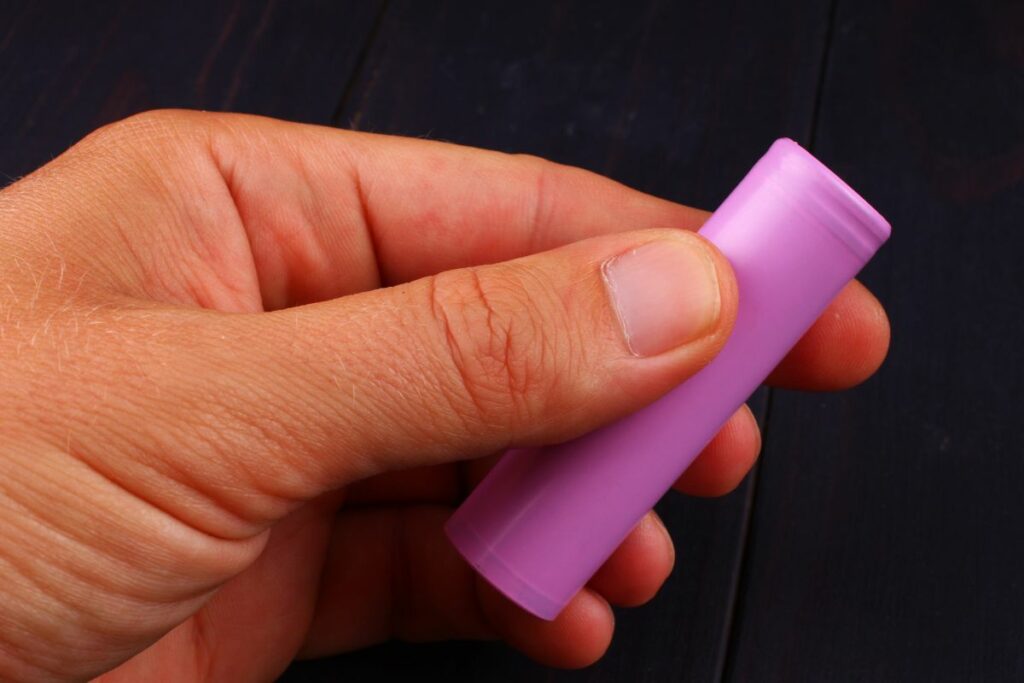
The Role of Batteries
Types of Batteries
In the context of electronic cigarettes (vapes), the most common battery types used are rechargeable lithium-ion and lithium metal batteries. These batteries offer advantages such as high energy density, lightweight, and long-lasting performance. However, due to their chemical properties, they can pose safety concerns when transported in carry-on luggage on airplanes.
Safety Concerns About Carry-On Batteries
The Federal Aviation Administration (FAA) regulates the transportation of batteries in order to reduce potential fire hazards during air travel. Lithium batteries, both lithium-ion and lithium metal, are categorized as hazardous materials due to their risk of sparking a fire when overheated or experiencing a short circuit. The FAA provides guidelines for passengers and airlines to ensure the safe transportation of batteries in carry-on luggage.
First and foremost, spare lithium-ion batteries should not exceed a rating of 100 watt-hours (Wh), and lithium metal batteries should not contain more than 2 grams of lithium content. It’s essential to keep spare batteries in a protective case to prevent short circuits, punctures, or damage.
When packing a vape with its batteries installed, travelers must ensure the device is turned off and protected from accidental activation. Passengers are not allowed to charge their vapes on board the aircraft, and using or charging a vape in checked luggage is strictly prohibited.
By following these guidelines and keeping safety in mind, travelers can prevent potential fire hazards associated with lithium batteries in carry-on luggage during air travel.
Legal Implications of Vaping Devices in Luggage
Cannabis and Vapes
Carrying vaping devices, particularly those containing cannabis or THC, in your luggage raises various legal concerns. While electronic smoking devices are generally allowed in carry-on luggage, the Transportation Security Administration (TSA) strictly prohibits the transport of marijuana products, including cannabis-infused vapes, regardless of their legal status in your departure or destination state or country.
Even in states where cannabis is legal, the TSA adheres to federal regulations, and federally, the drug remains illegal. When airport officials discover marijuana or THC-infused products during carry-on luggage checks, they may report the matter to local law enforcement, leading to potential fines or arrests.
Legalities in Different Countries
Vaping devices, such as electronic cigarettes, are regulated differently around the world. For example, the Federal Aviation Administration (FAA) in the United States permits passengers to bring electronic smoking devices in their carry-on bags, but they must not be used onboard the aircraft, and they cannot be charged during the flight. Additionally, these devices should be removed from luggage when passing through TSA checkpoints to avoid confusing the X-ray machines.
However, each country has its own specific laws regarding vaping and e-cigarettes, which may lead to potential legal repercussions when traveling internationally. Passengers should research their destination country’s regulations on electronic smoking devices to avoid potential legal issues. Some countries may have strict laws that result in fines, confiscation of the device, or even arrest if individuals are found carrying or using e-cigarettes.
In summary, it’s essential to understand the legal implications of carrying vaping devices in your luggage, particularly when it involves cannabis or THC products. Travelers should familiarize themselves with TSA regulations regarding electronic smoking devices and research the laws in their destination countries to avoid potential legal issues.

Preventing Accidental Activation
One of the concerns when carrying a vape in your carry-on luggage is the risk of accidental activation. This can lead to a number of potential problems, such as damage to the device, overheating, or even posing a fire hazard. In order to prevent these issues, it is important to take steps to ensure the vape remains off and secure while in transit.
A simple and effective method to prevent accidental activation is to remove the batteries from the device. By disconnecting the power source, the risk of the heating element turning on unintentionally is significantly reduced. Remember to store the batteries in a separate, secure case, as loose batteries can also pose a safety risk.
Another useful strategy to prevent accidental activation is to make use of a device with a built-in locking mechanism, such as a button lock or combination lock. These features can effectively prevent the device from being activated unintentionally, ensuring that it remains off throughout the duration of your journey.
In addition, it is essential to pack the vape securely within your carry-on luggage. This can be achieved by placing the device in a padded case or wrapping it with bubble wrap, providing an added layer of protection. This approach not only prevents accidental activation but also guards the vape against any potential damage from impacts during travel.
Finally, it is crucial to adhere to airline and transportation guidelines and regulations when it comes to carrying electronic devices. This may include informing airport staff about the presence of a vape in your carry-on luggage and ensuring it is properly and safely stored away at all times.
By taking these steps, you can significantly reduce the risk of accidental activation of your vape while traveling, ensuring a safe and enjoyable journey for both you and your fellow passengers.
Browse popular vape collections:
- Nicotine Disposables
- 2000 Puff Nicotine Disposable Vapes
- 2500 Puff Nicotine Disposable Vapes
- 5000 Puff Nicotine Disposable Vapes
- 6000 Puff Disposable Nicotine Vapes
- 7000 Puff Nicotine Disposable Vapes
- Disposable Vape Deals
- Best Vape Brands
- 8000 Puff Nicotine Disposable Vapes
- 9000 Puff Nicotine Disposable Vapes
- 5% Nicotine Disposable Vapes
- Rechargeable Nicotine Disposable Vapes
- Vape Coils
- Dab Wax Pens
- Dab Wax Pen Battery
- Yocan Vapes
- Vape Cases
Frequently Asked Questions
Can I bring a vape on a plane?
Yes, you can bring a vape on a plane, but it must be packed in your carry-on luggage and not checked luggage. This is because the batteries in electronic cigarettes and vaporizers pose a fire risk in the cargo hold. Remember to comply with the airline’s regulations regarding devices and liquids.
Do you have to remove your vape at airport security?
Airport security procedures may vary, but generally, you should be prepared to remove your vape and any associated equipment from your carry-on bag for screening. It’s advisable to keep your vape and its components in a separate, easily accessible compartment in your carry-on to expedite the process.
What are the TSA rules regarding vapes?
The Transportation Security Administration (TSA) prohibits vapes in checked luggage due to their lithium-ion batteries, which can pose a fire risk. Carry-on luggage is allowed for vapes, but some restrictions apply to the liquids used in them, such as vape juice. Always check the TSA guidelines before traveling to ensure you are compliant with current rules.
How should I pack my vape for air travel?
When packing your vape for air travel, remove the batteries from the device and place them in a battery case to prevent short-circuiting. Make sure to empty the vape tank to avoid leaking due to changes in cabin pressure. Keep all your vaping equipment organized in a small pouch or case within your carry-on luggage for easy access during security screening.
Can vape juice be taken on a plane?
Vape juice can be taken on a plane, but it must follow the TSA’s 3-1-1 rule for liquids in carry-on bags. This rule states that liquids, gels, and aerosols must be in containers no larger than 3.4 ounces (100 ml) and placed in a single, quart-sized, clear, zip-top bag. Ensure that you have a proper container and adhere to this rule for all vape juices you plan to take on your flight.
Is it allowed to bring a disposable vape on an airplane?
Yes, disposable vapes can be brought on an airplane, but they must be stored in your carry-on luggage just like other vaping devices. This is due to the same fire risk associated with their batteries. Follow all the applicable rules and guidelines for electronic devices when bringing a disposable vape on your trip.







